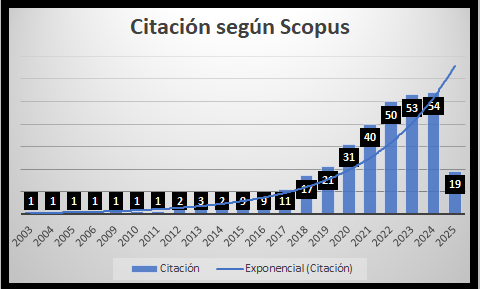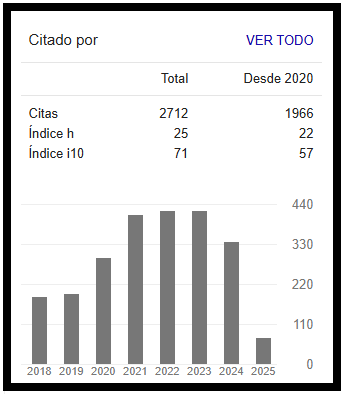Old age and gender in popular soap operas. Arguments for a proposal of a soap opera on active aging through educational entertainment
DOI:
https://doi.org/10.24265/cian.2020.n12.06Keywords:
Soap opera, Education, Older adults, Gender studiesAbstract
The literature of aging explores the deterioration of the human body, while feminist literature explores the problems of gender equality. According to Miguel Sabido (1989) and Albert Bandura (1989), the media, particularly the telenovelas, tend to use stereotypes that portray women and the elderly population negatively. Sabido uses the concepts of education and entertainment to unveil how telenovelas teach societal behavior, allowing a path for social discrimination towards them. Through these concepts, the researchers have demonstrated how the Mexican and Colombian telenovelas negatively portrayed the elderly people, especially women. Such analysis was not done in vain, as it had the purpose of giving agency to the elderly by allowing them to have to power of how they want to be represented in the media.
Metrics
Downloads
References
Amoros, C. (2005). Dimensiones de poder en la teoría feminista. Revista Internacional de Filosofía Política, 25, 11-34. https://www.redalyc.org/pdf/592/59202501.pdf
Bandura, A. (1973). Aggression: A social learning analysis. Prentice-Hall.
Barker. K. (2007, Julio 1). Sex soap & social change - The Sabido methodology. https://www.populationmedia.org/2007/08/09/sex-soap-social-change-the-sabido-methodology/
Barker, K. (2011). Sex, soap and social change: Theories underlyying the Sabido Methodology. En Population Media Center, Using the Media to Achieve Reproductive Health and gender equity (pp. 3-11). Population
Media Center, UNFPA. https://3lh07xhlls346a7ggo9psa1d-wpengine.netdna-ssl.com/wp-content/uploads/2014/11/UNFPA-English-webready-low-res.pdf
Carpallo, S. (2018, Abril 5). Por qué las mujeres mayores de 50 deben tener pareja sexual más jóvenes (y no al revés). Dos estudios analizan los beneficios (y los riesgos) del sexo en edad avanzada. El País. https://elpais.com/elpais/2018/03/31/buenavida/1522490375_671566.html
CNN Chile. (2018, Agosto 15). De los 25 países con tasas más altas de feminicidios, 14 son de América Latina. https://www.cnnchile.com/mundo/de-los-25-paises-con-tasas-mas-altas-de-femicidios-14-sonde-america-latina_20180815/
Departamento Administrativo Nacional de Estadística, DANE. (2018). Censo nacional de población y vivienda 2018 Colombia - ¿Cuántos somos? https://www.dane.gov.co/index.php/estadisticas-por-tema/demografia-y-pobla-cion/censo-nacional-de-poblacion-y-vivenda-2018/cuantos-somos
El Universal. (2017, Mayo 8). El 27.8% de las mujeres ejerce su maternidad sin pareja. https://www.eluniversal.-com.mx/articulo/cartera/economia/2017/05/8/el-278-de-las-mujeres-ejerce-su-maternidad-sin-pareja
Fajardo-Ortíz, G., & Olivares-Santos, R. (2008). Viejismo en el ambiente cotidiano. En V. Mendoza, M. Martínez, & L. Vargas (Eds.), Viejismo: Prejuicios y estereotipos de la vejez (pp. 77-100). FES Zaragoza, UNAM. https://docplayer.es/78840586-Capitulo-3-viejismo-en-el-ambiente-cotidiano-el-vocablo-estereotipo-implica-una-idea-expresion-o-modelo-en-el-caso-de-la.html
Federación Iberoamericana de Asociaciones de Personas Adultas Mayores, FIAPAM. (2014, Diciembre 3). No a la violencia contra las mujeres adultas mayores. https://fiapam.org/no-a-la-violencia-contra-las-mujeres-adultas-mayores/
García, J., & García, Q. (2015). El entretenimiento educativo en las telenovelas. Revista Internacional de Humanidades, 4 (1). http://journals.epistemopolis.org/index.php/humanidades/article/view/736/305
Igartua, J. (2005). Comunicación para la salud y sida: la aproximación educación-entretenimiento. Comunicar. Revista Científica de Comunicación y Educación, XIII(26), 35-42. https://doi.org/10.3916/C26-2006-06
Infobae. (2019, Diciembre 2). Los feminicidios crecieron 111% en los últimos cuatro años y 2019 amenaza con romper cifras récord. https://www.infobae.com/america/mexico/2019/12/02/los-feminicidios-crecieron-111-en-los-ultimos-cuatro-anos-y-2019-amenaza-con-romper-cifrasrecord/
Instituto Nacional de Estadística y Geografía, INEGI. (2015). Indicadores de población. https://www.inegi.org.mx/temas/estructura/
Instituto Nacional de las Personas Adultas Mayores, INPAM. (2019, Junio 14). El maltrato en la vejez. https://www.gob.mx/inapam/articulos/elmaltrato-en-la-vejez
Jiménez, L. (2014, Diciembre 20). Método comparativo constante. http://dossiermalinally.blogspot.com/2014/12/metodo-comparativo-constante.html
Korotky, S., Blanc, L., & Martín, H. (2003). Aportes a la preparación para una vida longeva. Publicación en homenaje a Lila Bezrukov de Villalba. Universidad Católica del Uruguay. https://www.gerontologia.org/portal/archivosUpload/Abuelos_por_eleccion.pdf
Lizaur, B. (2014, Marzo 29). Ángeles sin alas: políticas del contenido en la telenovela mexicana, 1957-1997. http://www.mediosmejoresqueganenmas.org/especializados/angeles-sin-alas-politicas-del-contenido-en-la-telenovela-mexicana-1957-1997
Martín-Barbero, J., & Muñoz, S. (1992). Televisión y melodrama. Tercer Mundo Editores.
Medina, M., & Barrón, L. (2010). La telenovela en el mundo. Palabra Clave, 13(1), 77-97. https://palabraclave.-unisabana.edu.co/index.php/palabraclave/article/view/1635/2154
Moreno, R., & Pardo, L. (2018). La violencia contra las mujeres en Latinoamérica. Revista Foreing Affairs Latinoamerica. http://revistafal.com/la-violencia-contra-las-mujeres-en-latinoamerica/
Rajewsky, I. (2005). Intermediality, Intertextuality, and Remediation: a literary perspective on intermediality. Intermédialités, 6, 43-64. https://www.erudit.org/en/journals/im/2005-n6-im1814727/1005505ar/
Red Latinoamericana de Gerontología. (2009). Hacia uma sociedade para todas las edades. Experiencias latino-americanas sobre relaciones intergeneracionales. https://www.yumpu.com/es/document/read/51870088/hacia-una-sociedad-para-todas-las-edades-red-latinoamericana
Revista Dinero. (2019, Agosto 17). Ser mujer sigue siendo una desventaja en el mercado laboral colombiano. https://www.dinero.com/pais/articulo/cuales-son-las-cifras-de-desempleo-de-las-mujeres-en-colombia/275660
Rey, G. (2007). Cultura, desarrollo y cooperación. Los remordimientos de la agenda cultural. Quórum. Revista de pensamiento iberoamericano, 17, 39-48. https://www.redalyc.org/pdf/520/52001705.pdf
Sabido, M. & Jara, R. (1989). Marco teórico de las telenovelas mexicanas. Revista Chasqui Revista Latinoamericana de Comunicación, 31, 24-30. https://revistachasqui.org/index.php/chasqui/article/view/827/869
Serret, E. (1998). Subordinación de la mujer e identidad femenina. Diferencias y conexiones. Revista Mexicana de Ciencias Políticas y Sociales, 43(174), 145-158. http://dx.doi.org/10.22201/fcpys.2448492xe.-1998.174.49132
Supermujer. (2015, Mayo 20). El estigma de las madres solteras. https://supermujer.net/elestigma-social-de-las-madres-solteras/
Tribuna Feminista. (2016, Julio 20). Ama de casa y dependiente del hombre: la publicidad perpetua estereotipos sexistas. https://tribunafeminista.elplural.com/2016/07/ama-de-casa-y-dependiente-del-hombre-el-rolperpetuo-de-las-mujeres-en-publicidad/
Tufte, T. (2005). Entertainment-education in development communication. Between marketing behaviours and empowering people. http://biblioteca.clacso.edu.ar/clacso/coediciones/2010082407083/14Chapter9.pdf
Unisabana. (2014, Diciembre 10). Colombia, el país con más madres solteras en el mundo y donde la gente menos se casa, dice estudio. https://www.unisabana.edu.co/menu-superior-1/saladeprensa/noticias/detalle-de-noticias/noticia/colombia-el-pais-con-mas-madres-solterasdel-mundo-y-donde-la-gente-menos-se-casa-dice-estudio/
Van Dijk, T. (2002). Análisis crítico del discurso y el pensamiento social. Athenea Digital. Revista de Pensamiento e Investigación Social, 1,18-24. https://doi.org/10.5565/rev/athenead/v1n1.22
Downloads
Published
Issue
Section
License
Copyright (c) 2020 Martha Estela Pérez García, Sandra Leal Larrarte, Lilia Ines Lopez

This work is licensed under a Creative Commons Attribution 4.0 International License.
In case the manuscript is approved, the authors retain the copyright and assign to the journal the right to publish, edit, reproduce, distribute, display and communicate in the country of origin and abroad by means of print and electronic media in different databases.
In order for this procedure to be recorded, the author must fill out the following formats:
Format 1 - Author data Format.
Format 2 - Affidavit on originality and authorization for the publication of articles Format.
Format 3 - Open Science Compliance.








2.png)


















